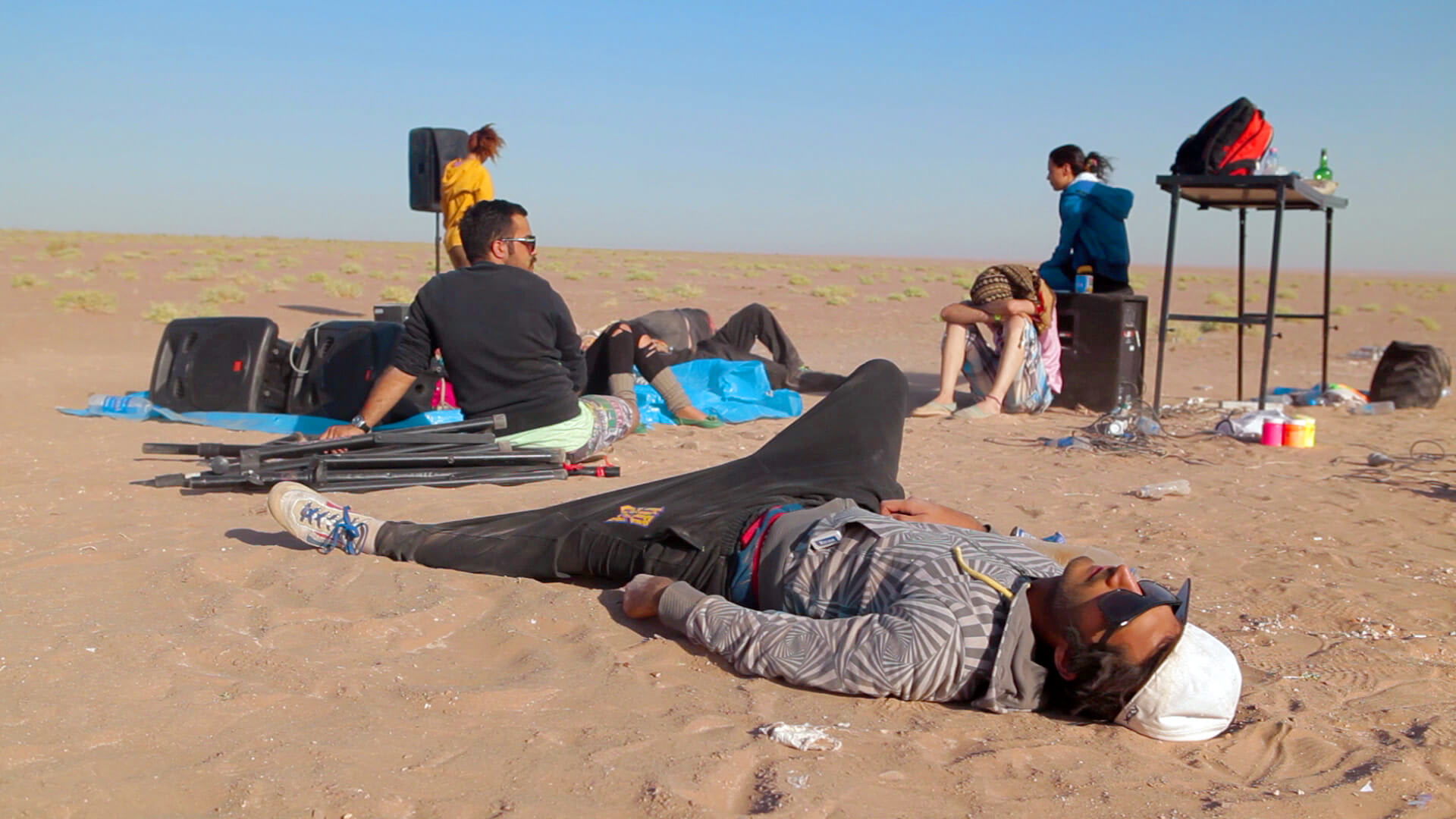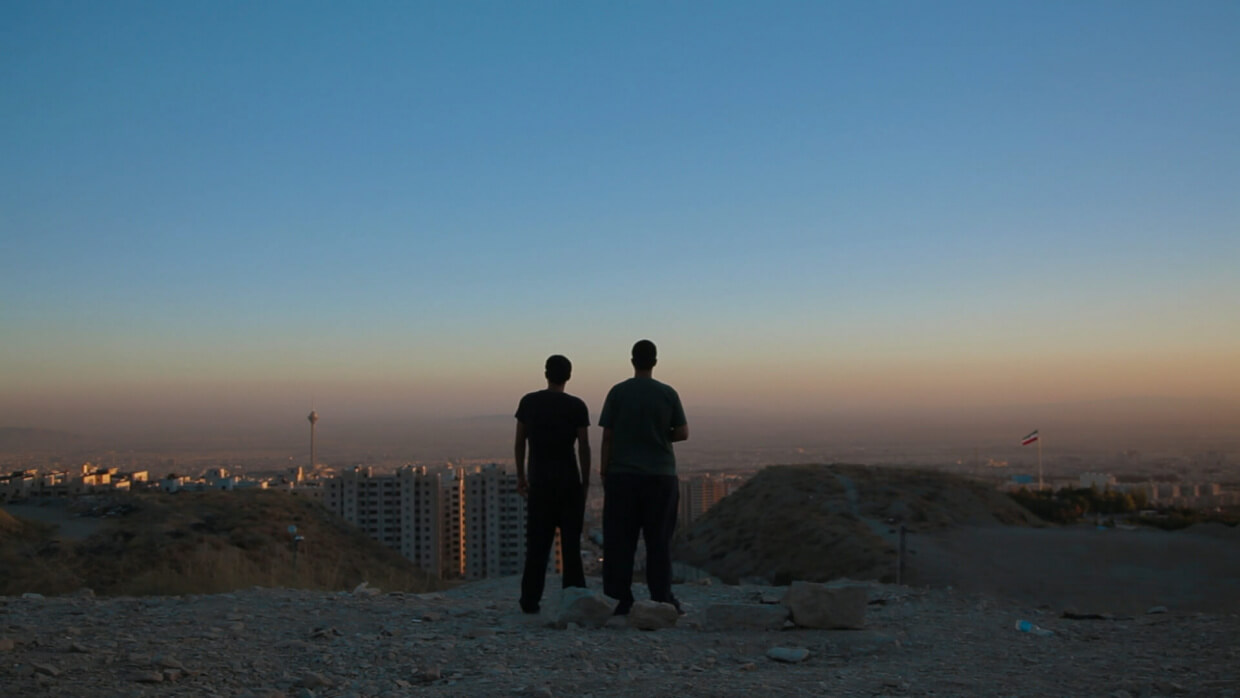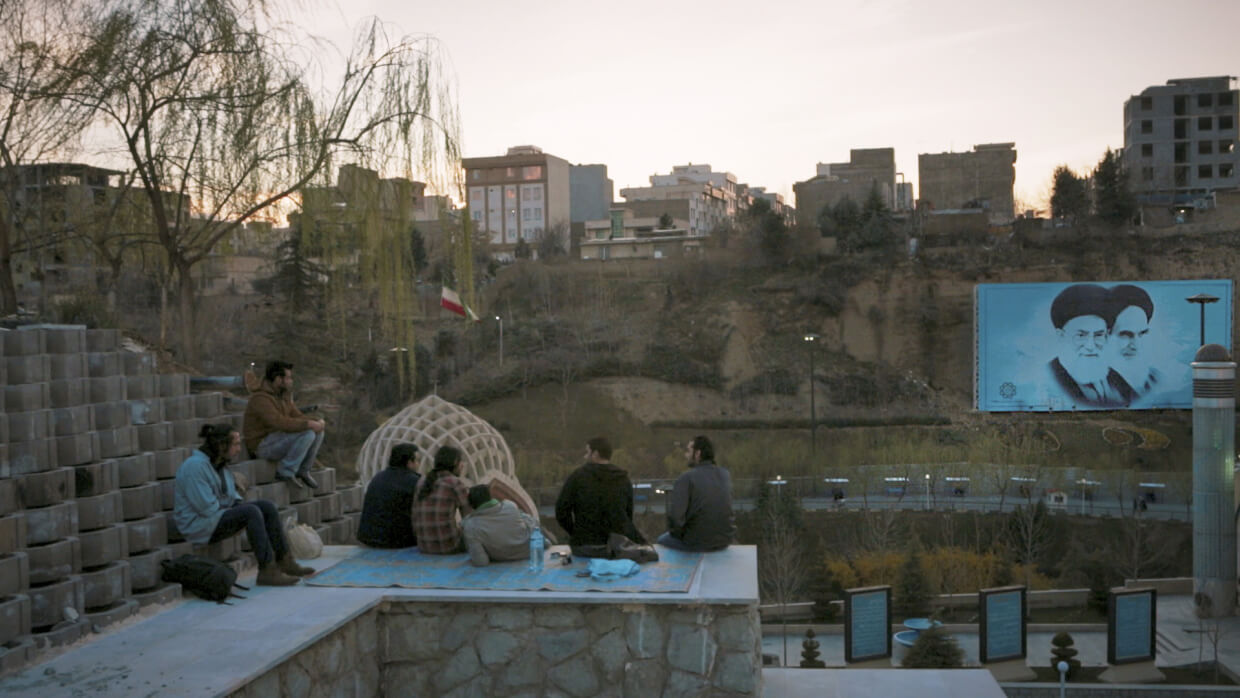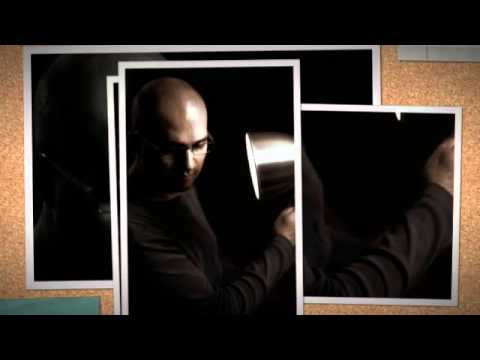
Raving Iran: The Story Behind Iran’s Illegal Party Scene
In June, three young men—two musicians and one filmmaker—started a three-year jail sentence in Iran for distributing underground music that hadn’t been licensed by Iran’s Ministry of Culture and Islamic Guidance. The police task force in charge of enforcing Islamic lifestyle ethics, which is known as the “morality police,” found them guilty of “insulting Islamic sanctities,” “spreading propaganda against the system” and committing “illegal audio-visual activities.” It’s the same fate that two Iranian DJs, Anoosh and Arash (aka Blade & Beard), could have faced for throwing small, illegal raves around Tehran for years before they left for Switzerland. Their adventures as Middle Eastern promoters, DJs and producers are now the subject of Raving Iran, a documentary created by German filmmaker Susanne Regina Meures that opens in theaters this fall (you can watch the trailer here).
The idea of underground dance parties taking place in a country like Iran probably seems unlikely, antithetical or impossible to westerners, so we connected the pair of promoters with Berlin-based Iranian DJ and producer Ali Khalaj (aka Namito) to get an insider’s perspective on the subculture. Like [Anoosh and Arash], Khalaj left his home country when his parents sent him to live with an uncle in West Berlin in 1985 to escape the Iran-Iraq War. After reunification, Khalaj got sucked into the burgeoning techno culture and slowly built a worldwide following. Like other Iranian ex-pat producers, Khalaj is an iconic figure in Tehran’s underground scene—even though he’s never played there. We connected him with Anoosh and Arash via Skype for an in-depth conversation about the documentary and everything that’s happened since.
Namito: I recently watched Raving Iran and really liked it. It was almost impossible to find modern music in Iran before I left in 1985, and the trouble that you could get for sourcing new music was frankly not worth it. How do young people in Iran find music these days?
Anoosh: As you might assume, the easiest way is the internet. Although there’s a lot of filtering in Iran, somehow Beatport, Resident Advisor and some other sources for electronic music are not censored by the authorities—thank God. There are also sources to get music for free, but as we are artists ourselves, we wanted to respect others’ copyright. Still, these sources gave us the opportunity to follow other artists and find new music. For example, when your own track “Train To Tehran” was released, you weren’t in Iran but your music still reached us. We also used to check who our friends were following to get a better idea of the underground music not promoted in Iran.
Namito: I remember the very first song I heard in Germany very clearly: “Shake The Disease” by Depeche Mode. That song was the foundation of my love for electronic music. Why did you start listening to underground electronic music?
Arash: We had a friend from the US who would bring CDs by people like Sasha and John Digweed every time he came over. He always had a lot of interesting underground music. We’d either go back to his villa or to Anoosh’s house to hang out and listen to that stuff. Before that, we used to listen to a lot of music, but we didn’t follow any artists in particular. So you could basically say that Sasha and Digweed changed our way of listening to music. Their music sounded so different that we started to seek out other artists.

Namito: Was there a scene back then that was already connected to this kind of music?
Anoosh: Yes. I think you even know them: Mehdi Ansari, his brother Salar and Siamak Amidi. They’re the crew behind the internationally known Analog Room events in Dubai. But, to be frank, the party scene in Iran has traditionally been based on things like booze and drugs. It was only after ecstasy arrived in Iran that electronic music began to become popular. Ecstasy finally allowed people to be in the mood and mental space to enjoy this type of music. In the beginning it was psytrance and trance, but slowly the crowd opened up to the sounds coming from Europe and the US. The coolest parties in Tehran—ones with well-mixed and presented music—were organized by Mehdi, Farzan and Siamak. Even though I was never invited, those parties made me curious. Before them, parties were just about drinking and having fun. It was like going to a bar. That was it.
Namito: To be honest, I never attended any of those famous Tehran parties myself. How does it work if you want to go to an underground event in Tehran?
Anoosh: Well, unlike every other country in the world, you can’t publicly advertise on social media to promote your events. We had to rely on an existing clandestine group or start our own group by inviting likeminded friends. We’d ask friends to invite their close friends who were into that kind of music.
Namito: It sounds like we are not talking about very many people.
Anoosh: The more people involved, the bigger the risk of getting in trouble with the morality police. It could be a crowd of just 30 people or as many as 150. We once cracked 200 in a city next to Tehran called Karaj.
Namito: Was that nerve-racking?
Anoosh: Yes, but we’d make sure we were using the right locations. We’d do them in either a rich person’s villa or at a place owned by someone connected to the system who was sympathetic to our cause. When someone would call the police, they’d realize that they can’t mess with the people in that particular villa, so they’d just politely ask us to turn down the volume. If we used a normal place, the same officers would have arrested every single person inside.
Namito: So you have to have connections to powerful people?
Anoosh: 100 percent.
Namito: How did you guys come up with the idea of making a movie about raving in Iran?
Anoosh: I used to party with friends back in 2008. Some of them came up with the idea of throwing a party in the desert. They showed me pictures of the location and praised the fact that the next police station was very far away, and therefore the location was possibly safe. We had around 100 people, and the vibe was unreal. We realized it is possible to do events like that, but not on a regular basis. The reason is that you have to pass through a few villages and stop there, be it for shopping for food or for sleeping. These villages are extremely small—maybe just 20 houses. Everybody knows each other. There’s no hotel around in that area, and people basically rent their bedrooms to travellers. That’s why we knew that if we expanded our activities it wouldn’t stay hidden. And we already knew that the remote desert areas were a place people went to escape the long arm of the morality police.
I asked everybody not to share any information on Facebook, but because our location was close to Isfahan, a major tourist city in Iran, we suddenly found that we had visitors from a few western countries—even from the US. Some of these western visitors took pictures and posted them to social media. The director of Raving Iran got in touch with us when she was in Iran herself. She told us that she had a project for her university that was about underground art and music in Iran.

Namito: Did you guys use a hidden camera?
Anoosh: In general the movie was shot with a Canon 5D. The sensitive shots—like the one in the Ministry of Guidance, responsible for reviewing publications for moral views—were taken with an iPhone. We altered Arash’s shirt pocket so that it had a hole in it so that his iPhone could shoot from inside.
Namito: You pixelated people’s faces to protect their identity. Do you think the people are safe? Is there a risk that the security forces will start to look for them?
Anoosh: In Iran, despite many things being haram, most people are still doing everything. The government leaves you alone as long as it doesn’t feel like it’s being attacked. The movie hasn’t been published yet in Iran, so we have to wait to see how they will react. Regarding the pixels, that was all the director. You’ll have to ask her. If the government decides to give the movie a political twist, then they could start to get active, but I don’t think they can reverse the pixels.
Namito: Do you think Raving Iran is a political movie? For me it’s more about the cultural issues in Iran and not about politics.
Anoosh: I’m totally with you. We had a lot of interviews recently and most journalists try to drag the subject to a political level. I told them neither my age nor my profession are political. The only thing that might be political is that I wish that I could do what I love in my own homeland and organize events or even festivals with other Iranian artists like Namito, Siamak Amidi or Dubfire.
Namito: When did you decide to leave Iran?
Anoosh: It was super last minute. We had decided to leave Iran, and not just to a neighboring country. We wanted to go somewhere where we could follow our dreams. Our first thought was Germany, but we also thought about places like Australia. The situation was so devastating that we didn’t see any future in Iran.
Namito: Did your family know about your plans?
Anoosh: My family supported my plan to leave Iran when they realized that what I wanted was not possible there. They told me, “If you really believe in yourself, go for your dream.”
Arash: I thought that I could apply for a visa somewhere and come back, but then I changed my mind. It would have been super difficult to go and get a visa every time—it’s a nightmare to do this in Iran. The embassies ask for thousands of documents.
Namito: Have you ever regretted your decisions to apply as a refugee in Europe?
Anoosh: [Laughs] A lot!
Arash: A thousand times.
Anoosh: It’s because of the circumstances. These last two years have been very difficult. We’ve been lucky that things have developed in the way they have with the movie, but it’s been a very dark and depressing time. The situation is crazy even now. We’ve got our asylum-seeker status sorted, but at the moment it’s just a piece of paper. We have no home. Our friend from Zurich allowed us to stay at his place while he’s in Iran. But when he comes back in two weeks we’ll be on the street again.
Namito: Do you have work permits?
Anoosh: Yes, but I doubt that we’ll find anything here on such short notice. We have no idea how much we need for rent and other expenses. We also don’t know where to find an affordable flat in this city. All this happened at once, and it’s not easy for us to handle. I guess it’ll take a few more months to settle down and calm down. We have to start to learn the language and find a job. Yet I’m also very thankful that I’ve met some people who, even after 13 years here, aren’t sure if they can stay or not. And don’t get me wrong: when I say I regret it many times, it’s because of the hardship we went through and are still going through. But I still think we made the right move. If we had stayed in Iran the last two years, my situation would not have changed— except being close to my family—and my goals would have still been far, far away, even if I had written the biggest track. My life would not have been in accordance with my goals.
Namito: Can you guys go back to Iran?
Anoosh: Nope!
Namito: I think it is a pity that what we do is considered bad or even evil in our beloved homeland. All we want to do is spread love and happiness with our music, and that, in my opinion, is extremely important in times like this with terror and war all around the world. I hope that we can witness our dreams someday and rave together in Iran.
On September 26, Raving Iran will premier at Berlin’s Volksbühne. The event includes a Q&A with Anoosh and Arash as well as a DJ set by them as Blade & Beard. The official film start in Germany is September 29.
Published August 25, 2016.

